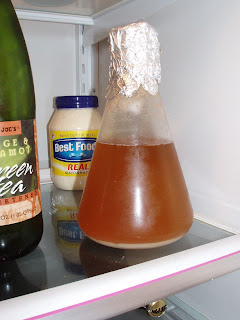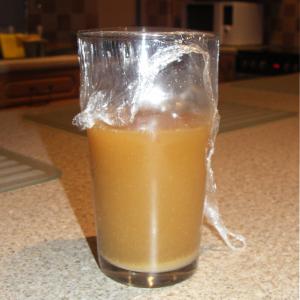hiphops
Well-Known Member
It's been 24 hours and no sign of life...no krausen...no bubbles...no nothing.
Question: Is my yeast dead? Should I repitch more yeast? If so, how would the dead yeast cells already in the beer affect the beer?
Here are the key facts:
- wyeast 1056.
- its a 2d generation yeast: i harvested it from my pale ale.
- the yeast has been sitting in the fridge for about 4 mos.
- I was able to brew an IPA with that same harvested yeast about 2 mos. ago so I know that at least that batch was ok. (the yeast, at that time, was sitting in the fridge for 2 months)
- I made a starter (1/2 cup dme and 1/2 liter of water) and let it do it's thing for about 24 hours. (I aerated it by shaking it as often as I could)
- it's a pumpkin ale.
- FG was 1.072 (I added some amber candi sugar for flavor).
Thanks everyone.
Question: Is my yeast dead? Should I repitch more yeast? If so, how would the dead yeast cells already in the beer affect the beer?
Here are the key facts:
- wyeast 1056.
- its a 2d generation yeast: i harvested it from my pale ale.
- the yeast has been sitting in the fridge for about 4 mos.
- I was able to brew an IPA with that same harvested yeast about 2 mos. ago so I know that at least that batch was ok. (the yeast, at that time, was sitting in the fridge for 2 months)
- I made a starter (1/2 cup dme and 1/2 liter of water) and let it do it's thing for about 24 hours. (I aerated it by shaking it as often as I could)
- it's a pumpkin ale.
- FG was 1.072 (I added some amber candi sugar for flavor).
Thanks everyone.




